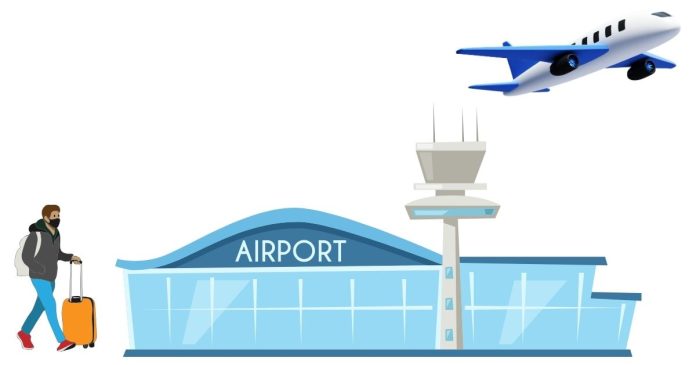One of the most common travel questions is, “How early should I get to the airport before my flight?” The answer depends on several factors, including the type of flight, the airport, and your personal travel habits. This guide will help you navigate the best timing to ensure a stress-free airport experience.
General Recommendations
Domestic Flights
- Suggested Arrival Time: 2 hours before departure.
For most domestic flights, arriving two hours before departure gives you enough time to check in, pass security, and get to your gate without feeling rushed.
International Flights
- Suggested Arrival Time: 3 hours before departure.
International travel involves additional steps like passport control and customs, which can take longer than domestic flights. Arriving three hours early is a safe bet, especially for busy airports or peak travel times.
Factors to Consider
1. Airport Size and Layout
- Smaller Airports: You may need less time since smaller airports typically have fewer passengers and shorter security lines.
- Major Hubs: Large airports like LAX, JFK, or Heathrow can have long lines and sprawling layouts, requiring more time to navigate.
2. Time of Day and Season
- Peak Travel Times: Early mornings, late afternoons, and holidays often mean busier airports and longer lines. Arrive earlier during these times.
- Off-Peak Hours: Mid-morning and mid-afternoon flights may have shorter wait times, so you could shave off 30 minutes from the general recommendation.
3. Check-In and Baggage
- Online Check-In: If you check in online and only have carry-on luggage, you can save time and may not need to arrive as early.
- Checked Bags: If you’re checking luggage, you’ll need extra time for bag drop-off. Some airlines have long lines during peak hours.
4. Security Screening
- TSA PreCheck or Global Entry: If you have these expedited screening programs, you can bypass long security lines and arrive closer to your flight time.
- Regular Screening: Standard security lines can vary greatly depending on the airport and time of day.
5. Airline Policies
Check your airline’s specific guidelines, as some recommend earlier arrival times for certain flights. Budget airlines, for instance, might have stricter rules about check-in cutoffs.
Additional Considerations
1. Traveling with Kids or Special Needs
If you’re traveling with young children, elderly passengers, or require special assistance, it’s a good idea to give yourself extra time to accommodate any unexpected delays.
2. International Travel Requirements
For international flights, allow time for:
- Passport and visa checks.
- Filling out customs forms.
- Potential additional screenings for certain destinations.
3. Connecting Flights
If you’re catching a connecting flight, make sure you account for any required re-checking of baggage or passing through customs during your layover.
Tips to Save Time at the Airport
- Check In Online: Most airlines allow you to check in 24 hours before departure, saving time at the airport.
- Pack Smartly: Follow TSA rules to avoid delays during security checks.
- Know Your Terminal: Check your terminal and gate information ahead of time to avoid confusion.
- Use Airport Apps: Many airports have apps that provide real-time updates on security wait times, gate changes, and more.
When It’s Okay to Arrive Later
If you’re an experienced traveler, flying domestically with carry-on luggage, and have TSA PreCheck, you might get away with arriving 60–90 minutes before departure. However, this approach is risky, especially if there are unexpected delays.
Arriving at the airport early helps ensure a smooth and stress-free travel experience. While the general rule of thumb is 2 hours for domestic flights and 3 hours for international flights, it’s important to consider factors like airport size, time of day, and your specific travel needs. When in doubt, err on the side of caution—better to relax at your gate than stress about missing your flight!
Safe travels!



